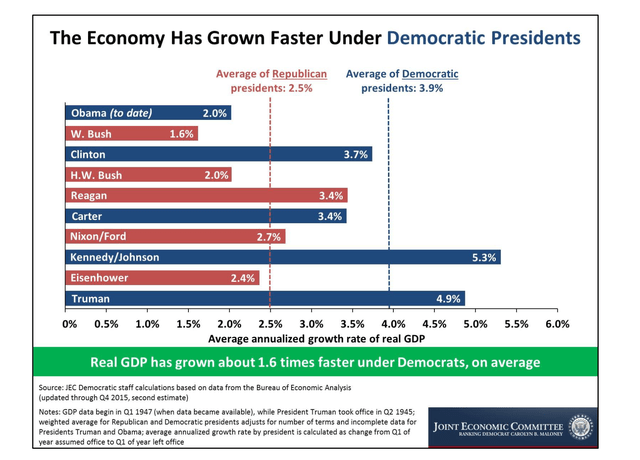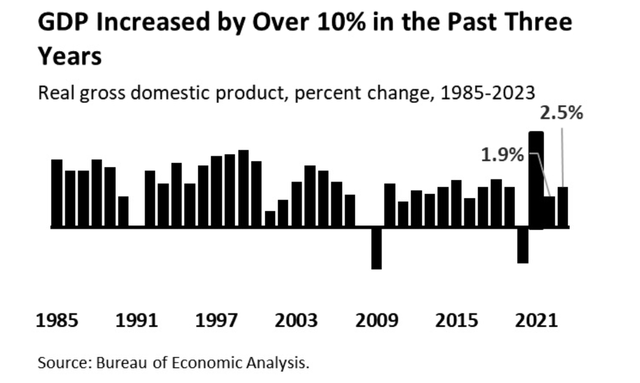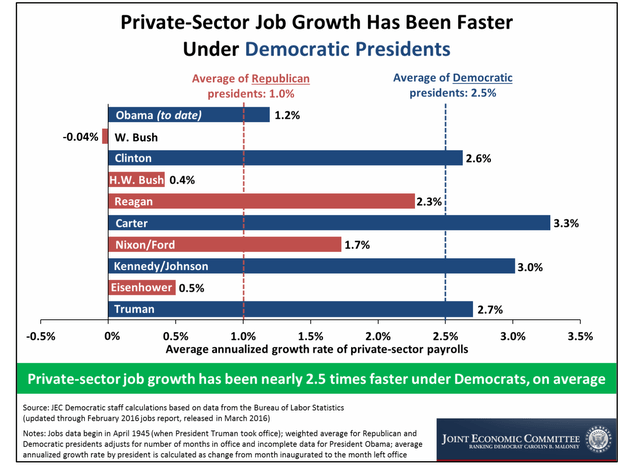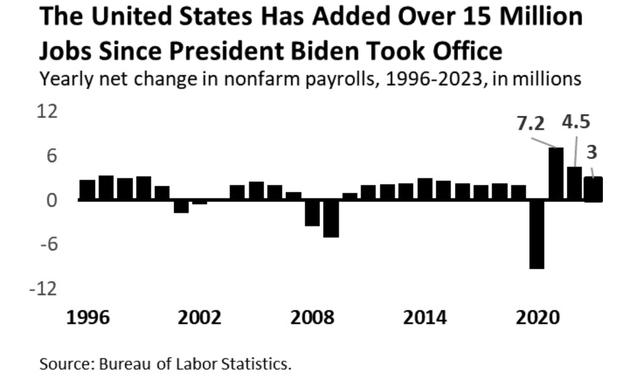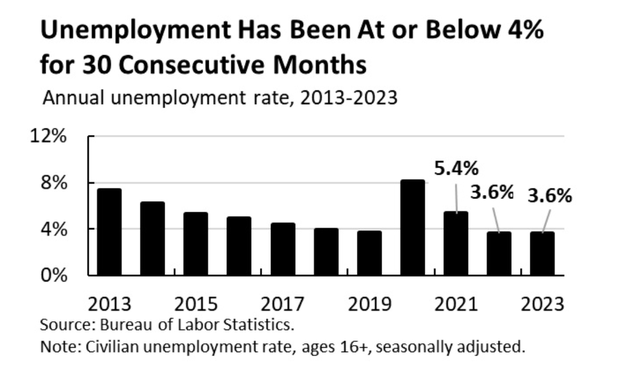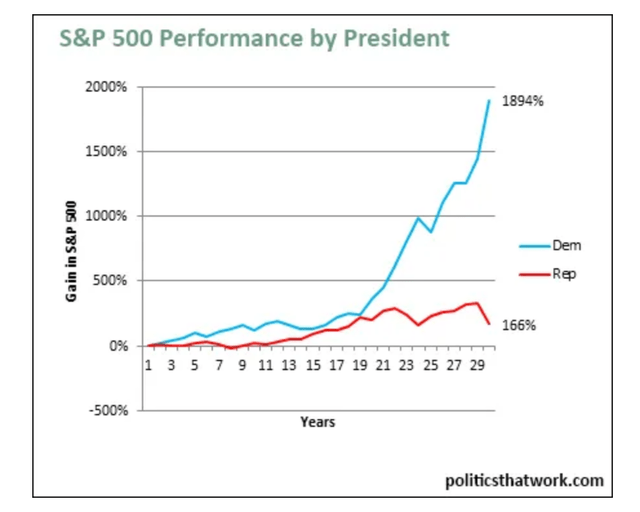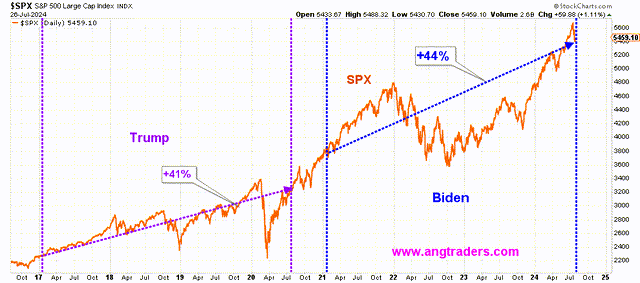Republican And Democratic Presidents, Which Is Better For The Economy And Stock Market?
Ahead of the 2020 US election, there was a consensus view in the media that Republican presidents were better for the economy than Democratic ones and I wrote a rebuttal to this view in the months leading up to that election. Since we are now on the verge of another election, I am re-posting the original article with updates related to the four-years of Democratic control of the White House we have experienced since the article was originally written,.
It is, of course, too early to call the election, but not too early to consider the economic effects of having a democratic president, especially when the majority rhetoric among those in the investing community — who should know the historical facts, but speak as if they don’t — is predicting economic and stock market doom should Trump lose the election. In this piece, we show that the facts say otherwise.
The Congressional Joint Economic Committee of 2016 (read full report here) showed that GDP grew, on average, 1.6 times faster under Democrats than under Republicans (chart below).
Since the Democrats started governing in 2021, GDP has grown by more than 10%.
Source: Joint Economic Committee of Congress 2024
When it comes to private-sector job growth, the difference is even greater; Democrats created 2.5 times more jobs than Republicans did (chart below).
The United States has added over 15 million jobs under President Biden, and the unemployment rate has remained at or below 4%for the last 30 months.
Source: Joint Economic committee of Congress
Unemployment has dropped to historically low levels.
According to Politics That Work, the stock market performance, as measured by the DOW, has been unequivocally better under Democratic presidents than under Republican ones; +1894% for Democrats, compared to only +166% for Republicans (chart below).
Source: Politics That Work
During the most recent 29 years during which Republicans have held the presidency, the value of the Dow has increased by 166%. During the Democratic presidencies, it has increased by 1894%- 11.4 times faster. The average growth in the value of the Dow under Democrats during this period has been 11.76% and under Republicans it has been 5.01%. (In case you are wondering, the reason the ratio is higher for the total is compounding.)….Politics That Work
For the equivalent time period (up to the end of July in the election year), Biden had slightly higher stock market gains than did Trump: +44% and +41%, respectively.
The reason for this indisputable difference between a Republican party stock market and a Democratic party stock market, can be explained by the different solutions each party applies to their shared misunderstanding of how the monetary system works. As ANG Traders’ associate, Alan Longbon, points out:
"Both parties believe the mainstream myths in that the Fedgov must budget and spend like a household and pay as it goes. They (the parties) have this in common; a stumbling block in common. How they approach this self imposed stumbling block is key to the difference in outcomes." (emphasis by the author)
The Democrats approach this false constraint from the perspective of taxation; spend in order to maximize the resource utilization within the economy, and pay for it through taxation of the already-rich. The Democrat’s model involves taxing money out of the private sector, but then spending it back into the economy to maintain education, healthcare, and physical infrastructure which helps to improve living standards, lowers costs for the private sector, and increases overall productivity; a poorly educated and unhealthy citizenry cannot be maximally productive. This government spending gets reflected in higher stock prices.
The Republicans, on the other hand, approach the same misunderstanding from the opposite direction; reduce both taxes and spending. The tax reduction is always skewed toward the already-rich, and the savings accumulate at the top of the economic pyramid. The reduced spending, meanwhile, increases costs for the private sector, reduces aggregate demand, and leads to insufficient infrastructure. That trifecta of negatives make it impossible to maximize productivity potential and eventually affects stock prices.
The evidence clearly shows that Democratic governments correlate much more with growth in both the economy and the stock market than when Republican governments are in power.
More By This Author:
There Is A Divergence In The Market
The Bull Market Is Still On, But ...
Expect Weakness In The Market - Our Models Were Right.

